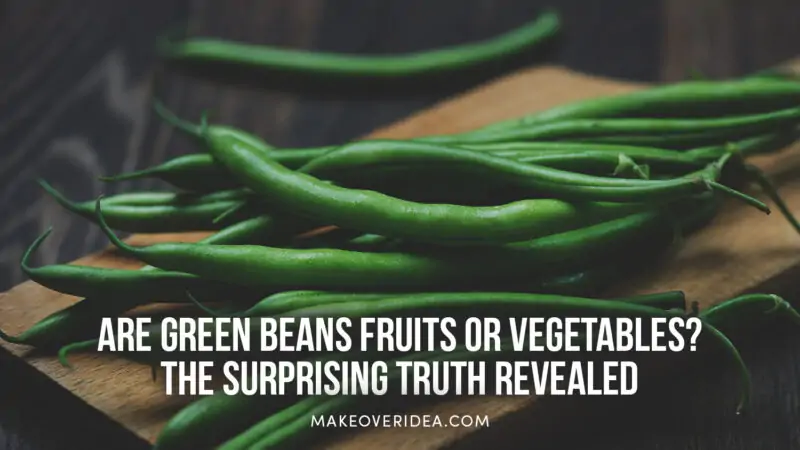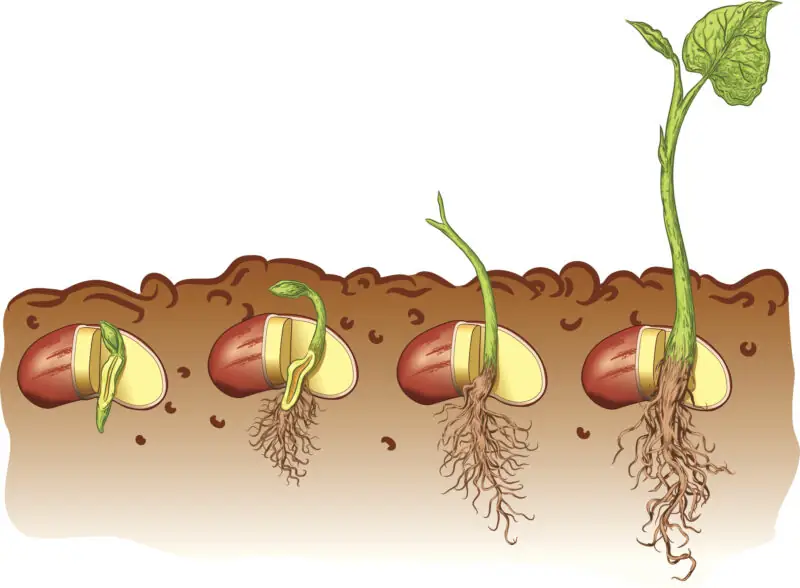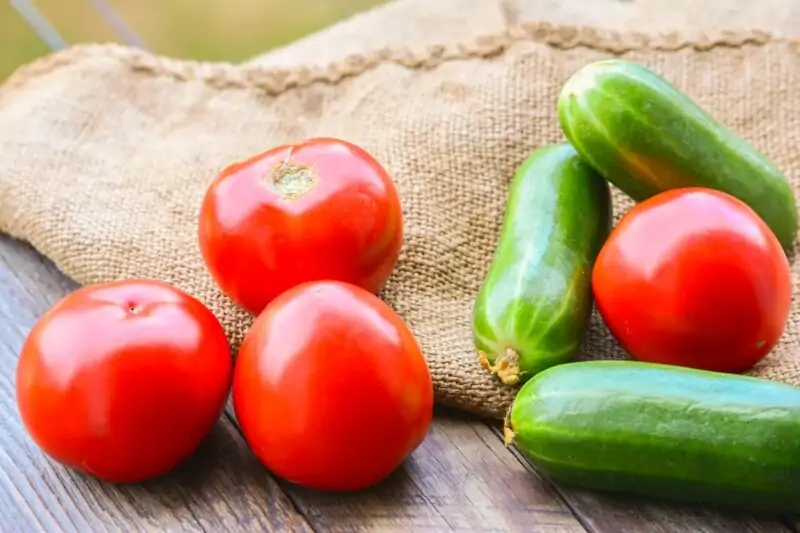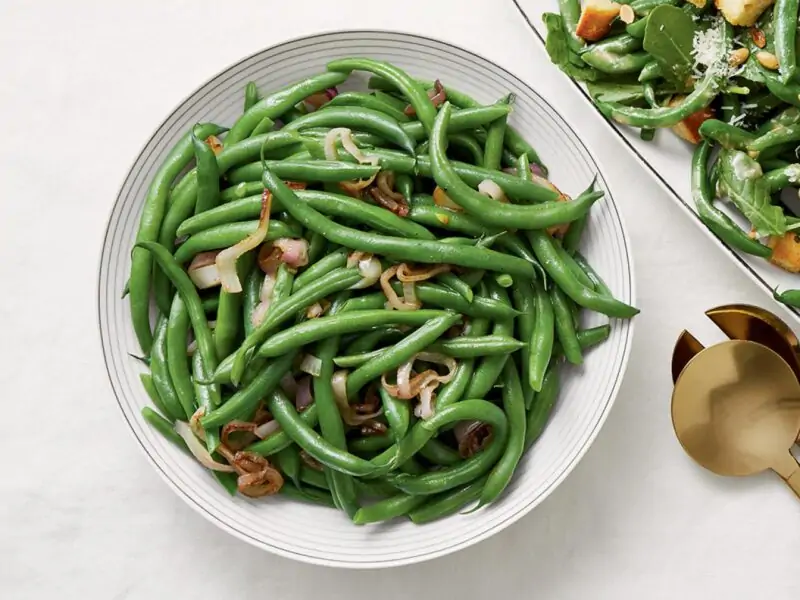Is Green Bean a Fruits or Vegetable? A Fun and Informative Guide

Introduction: The Age-Old Debate – Are Green Beans Fruits or Vegetables?
Have you ever pondered the question, “Are green beans fruits or vegetables?” It’s a debate that has raged on in botany circles for centuries. Some say they’re fruits due to their seed configuration, while others argue that they’re vegetables because of how we consume them.
Well, folks, I’m here to settle this debate once and for all. As an English SEO content writer with a passion for botany, I’ve done my research and am ready to provide you with some fun (and informative) facts about green beans!
What Makes a Vegetable a Vegetable?
First things first, let’s talk about what actually makes something a vegetable.
Vegetables are typically defined as any part of the plant that is edible and non-reproductive (meaning it doesn’t contain seeds). This includes parts such as leaves (lettuce), stems (celery), roots (carrots), bulbs (onions), flowers/buds (cauliflower), and even immature fruits like zucchini.
The Science Behind Fruits and Vegetables: Classifying Green Beans
But what about fruit? Is there more to it than just containing seeds?
Yes! Botanically speaking, fruit is defined as any structure that contains seeds developed from fertilized ovaries. This can include fleshy structures like apples or berries or dry pods like peanuts.
Green beans fall under the latter category – they have long pods filled with small roundish-shaped seeds inside. In botanical terms, then we could classify them technically speaking as fruit rather than vegetables—that settles one thing at least!
Green Bean Breakdown: Are Beans a Fruit or Vegetable?

So if our definition says:
vegetable = part of plant eaten which isn’t reproductive fruit = structure after fertilization containing developing seed(s)
Then where do green beans fit in? Well… both!
Green beans are both fruits and vegetables. Technically speaking, they are classified as fruit due to their seed configuration inside the pod. But we often consume them in ways that match the vegetable definition, such as steaming or sautéing them for dinner sides.
Are Peas and Green Beans the Same Thing? Comparing Legumes
Now before you start thinking all legumes (a family of products containing green beans) should be classed similarly – some types actually don’t have seeds at all! That includes peas which form part of this same family but aren’t technically a fruit because – hold on to your hats- they only develop from one ovary instead of several like other pods do.
So while they’re very similar in appearance and taste when eaten fresh or cooked, there is an important difference between peas and green beans botanically speaking.
Wait, Is Green Bean A Fruit? The Botanical Truth About Green Beans

Some might find it surprising that so many common foodstuffs fall under “fruit” according to botanical definitions—think pumpkins, cucumbers (which also have fleshy pulp), tomatoes (!)… even strawberries exhibit certain traits associated with fruits through their own structural origins within each small bulb-enclosed unit bearing those tiny glimmering-edged seeds… It’s enough to make your head spin!
But here’s what really matters: understanding how true-blue science names some products does not change much about our culinary use case.
For example:
We still might classify tomatoes if we were asked what goes into a veggie-focused salad Or continue using pumpkin for pie fillings despite acknowledging it is scientifically correct classification-wise
And certainly enjoy utilizing delicious green beans however we choose—with recipes spanning from healthy meal accompaniments like soups & salads up through advanced entree presentations featuring bean-purees or mixed-in combinations with other nutritious ingredients… Yum!
Green Beans Are Fruits: What Does This Mean for Culinary Use?

So what does it mean that green beans are technically fruits? Not much, really. At the end of the day, they’re still versatile ingredients used in many different culinary contexts.
You can eat them raw as your snacktime sidekick or cook them alongside meat dishes to add some extra nutrition and bulk to your dinner meals.
However, you choose to use green beans in your cooking though — just know that technically speaking — you’re eating fruit!
Beans a Vegetable in the Kitchen: How We Cook and Eat Green Beans
Going back to practical uses within the kitchen itself—even if we accept scientifically classifying them as “fruit”, people widely consider these guys more like veggies since they go into so many favorite savory dish recipes:
- We stir fry ‘em up with seasonings
- Steam then sprinkle olive oil & pepper
- Blanch whole sprigs – then slather on garlic butter
- Saute briefly, adding spinach leaves atop the next pan while still hot
- Shrink them down by pounds through drying out for soup bases …etc., etc…
Really – they are an extremely popular vegetable choice by any standard, which is pretty amazing considering they might be classified botanically-wise contradictorily just like sweet potatoes falling under the vegetable category even though they’re technically tubers (underground structures for storing nutrients) and not true roots.
String Beans vs. Green Beans: Are They Both Actually Fruits?
One common criticism of the “green beans are fruits” argument is that it only applies to certain types of green beans, specifically those with large seeds inside their pods.
But what about string beans? These skinny green legumes have long been a staple in many culinary traditions across the globe, often being used interchangeably with regular green beans when available. So are they also classified as fruit?
Yes! Despite their slight visual differences between conventional bean varieties; stringed ones still maintain some noticeable similarities which make them more likely candidates from a botanical standpoint too…
Both conventionally shaped and skinny-style produce all contain small round or oblong seeds within elongated outer capsules – structurally identical in this particular sense- And thus similarly-dubbed scientifically regardless of if thin & tender or broad & succulent!
Frequently Asked Questions
No, not all types of beans qualify as fruits despite fitting into specific plant families that exhibit such seedpod characteristics commonly associated with the aforementioned bourgeoning-tropical cropping forecast – like edamame/soybeans.
You can classify green beans however you want—whether using “fruit” terminology doesn’t really matter since we always treat these ingredients practically speaking like veggies anyway.
Definitely — other leguminous plants share the same general concepts shown by standard bean-plant anatomy containing seeds matured within pods… Peas happen most notably here indeed!
Conclusion: Embracing Green Beans as Fruits and Vegetables
In conclusion, let’s end our discussion on whether “Green Beans are a fruit or a vegetable” works best depending on the type of metric by which you measure it- is it in terms of botanical classification, culinary use, or nutrient value?
Regardless, we can all agree that green beans are a delicious and healthy ingredient that should be embraced as both fruit AND vegetable!
So don’t let these nomenclature debates stop you from enjoying this versatile produce at your next meal. Whether they’re incorporated into a savory stir-fry, served up steamed alongside some fish fillets, or canned for long-term storage purposes – these nutritional powerhouses will always bring zest (and taste) to any dish!